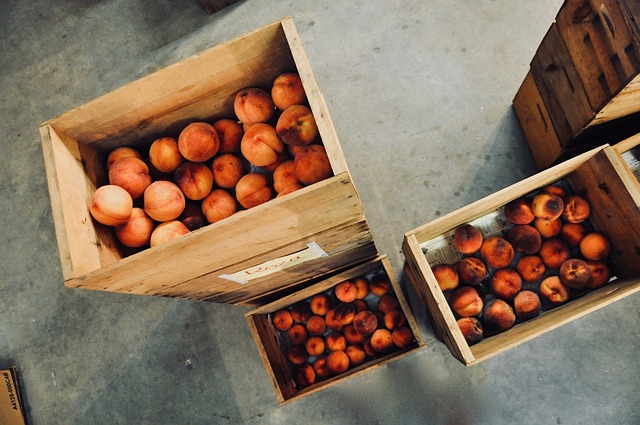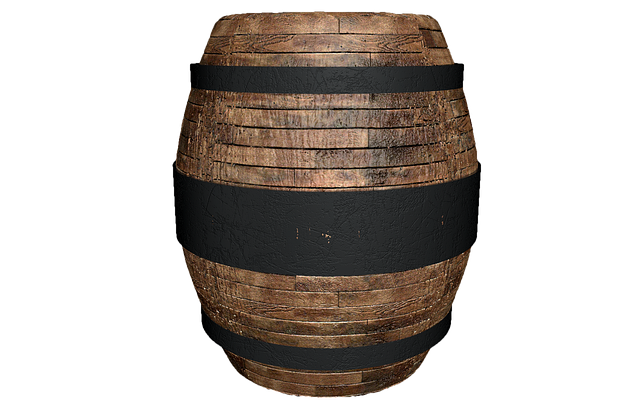perfume storage tips
Perfume Storage Tips: A Comprehensive Guide to Preserving Aromas
Introduction
Welcome to an aromatic journey where we explore the art and science of perfume storage, a crucial aspect often overlooked in the world of fragrances. This article aims to guide you through the intricacies of preserving and storing perfumes, ensuring their longevity and optimal performance. From understanding the basics to uncovering global trends and future innovations, we delve into every corner of this captivating topic. Get ready to transform your perfume collection into a well-organized, fragrant sanctuary!
Understanding Perfume Storage Tips: Unveiling the Basics
Definition:
Perfume storage tips refer to a set of practices and guidelines designed to maintain the quality, scent, and longevity of perfumes. It involves creating an optimal environment to slow down the aging process and prevent degradation, ensuring each fragrance remains true to its composition.
Core Components:
- Temperature Control: Maintaining a consistent, cool temperature is essential. Extreme heat can accelerate perfume aging, while cold temperatures may solidify some notes. Ideally, keep perfumes in a climate-controlled environment between 18-24°C (64-75°F).
- Light Exposure: Avoid direct sunlight and strong artificial lighting. Perfumes are sensitive to light, and excessive exposure can cause photochemical reactions, altering the fragrance profile. Store them in opaque containers or drawers.
- Airflow and Humidity: Proper ventilation is crucial, but avoid drafty areas. Moderate humidity levels help prevent dehydration of the perfume oils. A relative humidity (RH) range of 40-60% is considered ideal for fragrance storage.
- Container Choice: Opt for dark glass bottles with tight seals to protect from light and oxygen. Different bottle shapes and sizes offer various storage solutions, catering to specific needs.
- Rotation and Organization: Regularly rotate your perfume collection to ensure even exposure to ambient conditions. Organize them by scent profile, concentration (e.g., Eau de Parfum vs. Eau de Toilette), or seasonal preferences.
Historical Context:
The practice of proper perfume storage dates back centuries, with ancient perfumers meticulously preserving their creations. However, the modern approach has evolved significantly with advancements in fragrance formulation and packaging. Contemporary storage tips leverage scientific understanding to create ideal conditions, ensuring perfumes remain fresh for extended periods.
Global Impact and Trends: A World of Aromatic Diversity
International Influence:
Perfume storage tips transcend borders, influencing global fragrance markets. The knowledge exchange between countries has led to the adoption of best practices, resulting in improved perfume preservation worldwide. For instance, Europe’s rich perfumery heritage has contributed to sophisticated storage methods, while Japan’s focus on traditional craftsmanship offers unique insights into scent preservation.
Regional Trends:
- North America: Known for its mass-market fragrances, North America promotes efficient storage solutions catering to diverse consumer needs. Retailers often provide guidance on proper perfume care, emphasizing temperature and humidity control.
- Europe: European perfumers prioritize natural ingredients and intricate formulation techniques. As a result, many embrace traditional storage methods, utilizing bamboo or wood containers to regulate moisture levels.
- Asia: The Asian market, particularly Japan and South Korea, showcases innovative storage designs. Smart perfume cases with built-in climate control and apps for tracking fragrance expiration dates are becoming popular.
- Middle East: With a preference for intense, long-lasting fragrances, Middle Eastern markets drive the development of advanced storage systems to preserve high-concentration oils.
Economic Considerations: The Business of Scent Preservation
Market Dynamics:
The global perfume market, valued at over $200 billion in 2022, is highly competitive and sensitive to quality perceptions. Effective storage practices are essential for brands to maintain brand image and customer loyalty. High-end luxury brands often invest heavily in sophisticated storage solutions to ensure their fragrances remain premium offerings.
Investment Patterns:
- Luxury Brands: Top brands allocate substantial resources for controlled storage facilities, especially for limited-edition or vintage perfumes. They employ advanced climate control systems and specialized packaging.
- Mass Market Retailers: While cost-effective storage is crucial, budget retailers often rely on standard room conditions with occasional stock rotation.
- Online Sales: E-commerce platforms offer diverse storage options, from temperature-controlled warehouses to home fridges for rare or delicate fragrances.
Role in Economic Systems:
Perfume storage tips contribute to economic sustainability by minimizing waste and maximizing product lifespan. Proper preservation reduces the need for frequent repurchases, benefiting both consumers and brands. It also encourages responsible sourcing and packaging practices, aligning with global sustainability goals.
Technological Advancements: Revolutionizing Scent Storage
Innovations in Storage:
- Smart Containers: Tech-enabled perfume bottles now monitor temperature and humidity levels, alerting users when conditions deviate from optimal storage. Some even adjust internally to maintain ideal ambient conditions.
- Climate Control Cabinets: Advanced cabinets use precise climate control systems to simulate a stable, preservative environment. These are popular in professional settings like museums and perfumeries.
- Digital Record-Keeping: Digital platforms allow perfume enthusiasts to track their collections, including purchase dates, expiration estimates, and scent notes, ensuring informed decisions.
Impact and Future Potential:
Technological advancements promise enhanced perfume preservation, personalized storage solutions, and improved customer experiences. In the future, we can expect:
- Customized Storage Systems: AI-driven recommendations for ideal storage conditions based on individual perfume profiles and user preferences.
- Interactive Labels: Augmented reality (AR) labels that provide real-time data on fragrance composition and preservation status.
- Smart Warehousing: Advanced warehouse management systems for efficient inventory control, especially in e-commerce logistics.
Policy and Regulation: Ensuring Safe Scent Storage
Key Policies and Regulations:
- Food and Drug Administration (FDA) Guidelines: In many countries, the FDA provides regulations for cosmetic ingredient safety, including fragrances. These guidelines ensure product quality and consumer protection.
- Eco-friendly Packaging Initiatives: Global efforts like the Ellen MacArthur Foundation’s New Plastics Economy drive sustainable packaging solutions, encouraging eco-conscious perfume storage options.
- Customs and Import Regulations: International trade agreements dictate the import/export of perfumes, often requiring proper documentation for compliance and preservation.
Influence on Development:
Regulatory frameworks shape the perfume industry’s approach to storage by setting safety standards and promoting sustainable practices. Brands must adhere to these regulations, driving innovation in storage materials, packaging designs, and preservation techniques. Compliance ensures consumer trust and supports the industry’s long-term sustainability.
Challenges and Criticisms: Overcoming Obstacles
Common Issues:
- Inconsistent Storage Conditions: Home storage environments can vary widely, making it challenging to maintain optimal conditions for all perfumes.
- Lack of Education: Many consumers are unaware of proper perfume storage practices, leading to accidental damage or premature aging.
- Cost and Accessibility: Advanced storage solutions can be expensive, limiting accessibility for individual collectors and small businesses.
Proposed Solutions:
- Education Campaigns: Raise awareness through online tutorials, workshops, and informative resources to empower consumers with knowledge about perfume preservation.
- Standardized Storage Facilities: Create shared storage spaces or rental services offering controlled environments, catering to individuals and businesses alike.
- Affordable Technologies: Encourage technology developers to create cost-effective solutions without compromising performance.
Case Studies: Real-World Success Stories
1. The Art of Perfume Preservation at the Louvre Museum:
The Louvre’s perfumery department houses a vast collection of rare fragrances, some dating back centuries. They employ climate-controlled vaults and specialized storage cabinets to maintain optimal conditions. Regular monitoring ensures the preservation of historical scents, allowing researchers access to unique fragrances for study and exhibition.
2. Japan’s Smart Perfume Cases:
A Japanese startup developed an innovative smart perfume case that uses IoT (Internet of Things) technology. The case monitors temperature, humidity, and even light exposure, sending alerts to users’ smartphones. It also adjusts internally to maintain ideal conditions, ensuring the fragrance remains unchanged for years.
3. Sustainable Storage in Perfumery Schools:
Leading perfumery schools worldwide emphasize sustainable storage practices. Students learn about eco-friendly materials, natural preservation methods, and efficient ventilation systems. By embracing these techniques, future perfumers contribute to a greener perfume industry while ensuring their creations are well-preserved.
Future Prospects: A Glimpse into Tomorrow’s Scented World
Potential Growth Areas:
- Personalized Storage: Advanced technology will enable tailored storage solutions for individual fragrances, considering scent profiles and personal preferences.
- Sustainable Packaging: The demand for eco-friendly packaging will drive innovation in biodegradable materials and refillable systems.
- Digital Preservation: Digital archives of fragrance formulas and historical scent notes will enhance preservation efforts and support research.
Emerging Trends:
- Wearable Perfumes: Developing technologies enable perfumes to be incorporated into clothing or skin, eliminating the need for traditional storage.
- Virtual Reality (VR) Showrooms: VR experiences offer immersive perfume shopping, allowing customers to explore fragrances in a virtual environment with precise storage conditions.
- Global Collaboration: Increased international collaboration will lead to knowledge sharing and the development of universal storage standards.
Strategic Considerations:
Perfume brands and enthusiasts should stay informed about technological advancements, regulatory changes, and emerging trends. Investing in education and research fosters a deeper understanding of perfume preservation, ensuring the industry’s longevity and adaptability.
Conclusion: Preserving Aromas for Generations to Come
In conclusion, perfume storage tips encompass a multifaceted approach to safeguarding the world’s aromatic heritage. From historical practices to modern technologies, the journey of preserving fragrances is both art and science. By understanding temperature control, light exposure, and innovative storage solutions, we can ensure that perfumes remain true to their composition for years to come.
As the perfume industry continues to evolve, staying informed about global trends, economic considerations, and technological advancements will empower us to make responsible choices. Let this article be a guide, inspiring you to embark on your own fragrant journey, where proper storage becomes an art form in itself.
FAQ Section: Answering Your Burning Questions
Q: How often should I rotate my perfume collection?
A: Regular rotation is key. Aim for once every 2-3 months, ensuring all perfumes are exposed to similar conditions. This prevents any one fragrance from dominating the storage environment.
Q: Can I store perfumes in the refrigerator?
A: While refrigeration can slow down aging, it’s not ideal for long-term storage. Extreme cold can solidify certain notes, altering the scent profile. Instead, use a climate-controlled storage cabinet or drawer at a consistent cool temperature.
Q: Are dark glass bottles truly necessary for perfume storage?
A: Absolutely! Dark glass filters out light, preventing photochemical reactions that can alter fragrances. It’s an essential component in preserving the intended aroma of your perfumes.
Q: How do I store limited-edition or rare perfumes?
A: These precious scents deserve extra care. Consider specialized climate-controlled cabinets or even custom storage solutions designed for extreme preservation. Avoid exposure to direct sunlight and rapid temperature changes.
Q: Can technology really make a difference in perfume preservation?
A: Absolutely! Smart containers, digital record-keeping, and climate control cabinets offer unprecedented level of control and monitoring. These technologies ensure optimal conditions, extending the lifespan of your favorite fragrances.













